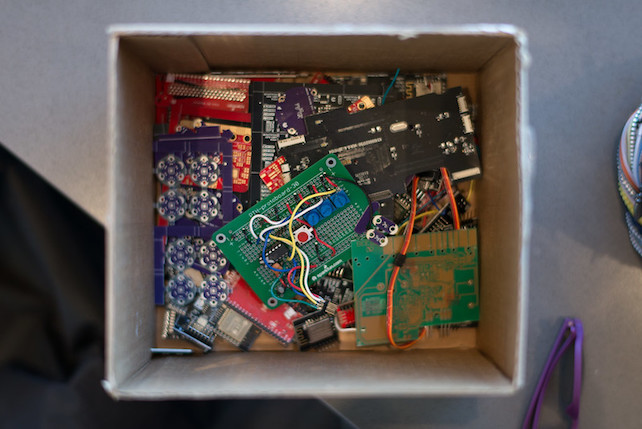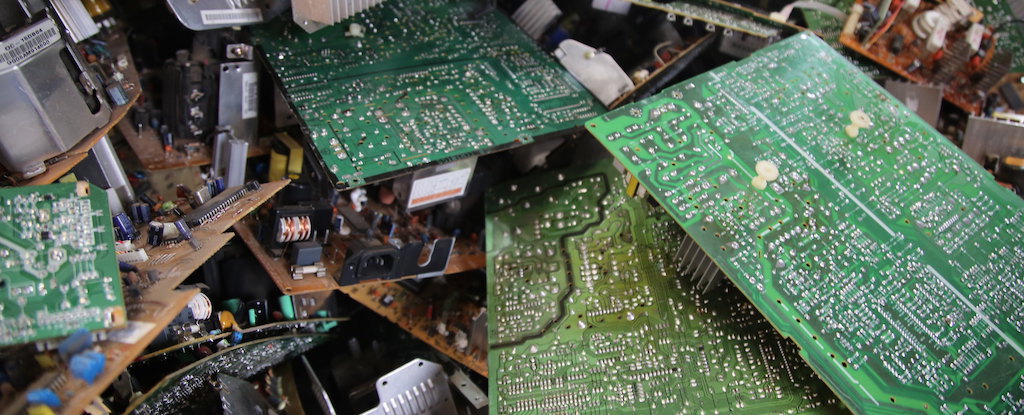Products You May Like
Artificial intelligence is rapidly getting better at mimicking its human creators. Generative AI can now convincingly hold conversations, produce art, make movies, and even teach itself how to replicate computer games.
But as a new study by researchers from the Chinese Academy of Sciences and Reichman University in Israel warns, artificial intelligence may also be inadvertently imitating another, less noble hallmark of modern humanity: trashing the environment.
Fueled by the surging popularity of generative AI systems that include chatbots like ChatGPT and other content-creation systems, we could end up with between 1.2 million and 5 million metric tons of additional electronic waste by the end of this decade.
The new study focuses particularly on large language models (LLMs), a type of AI program that can interpret and produce human language, along with performing related tasks.
Trained on vast datasets of text, LLMs identify statistical relationships underlying the rules and patterns of language and apply them to generate similar content, enabling uncanny capabilities like answering questions, producing images, or writing text.
In addition to its many benefits, however, generative AI has raised a host of philosophical and practical questions for society – from concerns about AI taking our jobs to fears of it being misused by humans, deceiving us, or even becoming self-aware and rebellious.
And as the new study highlights, generative AI is also beginning to raise alarms about the daunting amount of extra e-waste the technology is expected to indirectly generate.
Generative AI is reliant on prompt technological improvements, including to hardware infrastructure as well as to chips. The upgrades needed to keep pace with the technology’s growth could compound existing e-waste issues, they note, depending on the implementation of waste-reduction measures.
“LLMs demand considerable computational resources for training and inference, which require extensive computing hardware and infrastructure,” the study’s authors write. “This necessity raises critical sustainability issues, including the energy consumption and carbon footprint associated with these operations.”

Previous research has largely focused on the energy use and associated carbon emissions from AI models, the researchers note, paying relatively little attention to the physical materials involved in the models’ life cycle, or the waste stream of electronic equipment left in their wake.
Led by Peng Wang, an expert in resource management with the Chinese Academy of Sciences’ Key Lab of Urban Environment and Health, the study’s authors calculated a forecast of possible e-waste quantities created by generative AI between 2020 and 2030.
The researchers envisioned four scenarios, each with a different degree of production and use of generative AI systems, from an aggressive, widespread-use scenario to a conservative, more constrained scenario.
Under the more aggressive scenario, total e-waste creation due to generative AI could grow as high as 5 million metric tons between 2023 and 2030, with annual e-waste potentially reaching 2.5 million metric tons by decade’s end. That’s more or less the equivalent of every person on the planet discarding a smart phone.
The high-usage scenario also forecast that AI’s extra e-waste would include 1.5 million metric tons of printed circuit boards and 500,000 metric tons of batteries, which can contain hazardous materials like lead, mercury, and chromium.
Just last year, a mere 2.6 thousand tons of electronics was discarded from AI-devoted technology. Considering the total amount of e-waste from technology in general is expected to rise by around a third to a whopping 82 million tonnes by 2030, it’s clear AI is compounding an already serious problem.
By examining these different scenarios, Peng and his colleagues draw attention to an important point: Generative AI doesn’t necessarily have to impose such an excessive e-waste burden.
The researchers note the International Energy Agency and many tech companies advocate for circular economy strategies to address e-waste.
According to the new study, the most effective strategies are lifespan extension and model reuse, which entail extending the longevity of existing infrastructure and reusing key materials and modules in the remanufacturing process.
Implementing circular economy strategies like these could reduce the e-waste burden from generative AI by up to 86 percent, the researchers report.
The study was published in Nature Computational Science.
